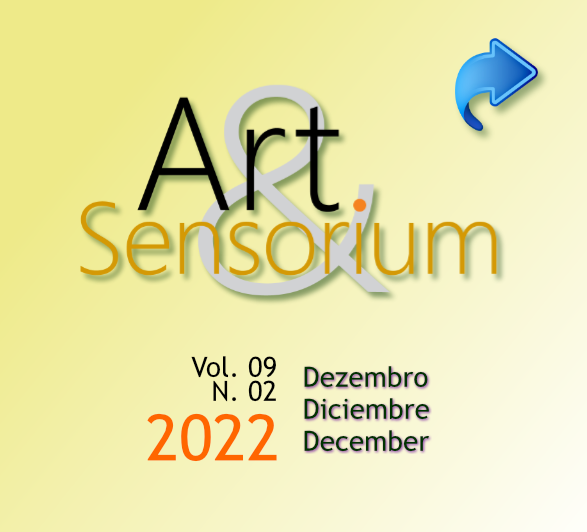FROM BEAUTY TO “UGLY BEAUTY”
DOI:
https://doi.org/10.33871/23580437.2022.9.2.160-172Abstract
This study presents a process of creating a self-portrait based on the selfie, developed in a graduate program in visual arts at the doctoral level. The objective is to discuss the transfiguration of the face through a subversion of facial beautification with clay mask and effects of selfie editing applications. The research is based on the concept of 'beautification', by Danto (2015), and the methodological approach follows the three dimensions proposed by Rey (2002), resulting in self-portraits that show a transfigured, misshapen face, as a result of the operating mode used. This allowed us to conclude that the creation of a subversion of conventional beautification reveals an “ugly beauty” that says more about the transfiguration of the face as a conceptual content and contributes to thinking about the volatile beauty of the countless selfies posted, daily, on social networks as a creative power in realization of the self-portrait inserted in the context of contemporary art and in dialogue with current technologies.
Downloads
Downloads
Published
Issue
Section
License
Copyright (c) 2022 International Interdisciplinary Journal of Visual Arts - Art&Sensorium

This work is licensed under a Creative Commons Attribution 3.0 Unported License.
Authors who publish with this journal agree to the following terms:- Authors retain copyright and grant the journal right of first publication with the work simultaneously licensed under a Creative Commons Attribution License that allows others to share the work with an acknowledgement of the work's authorship and initial publication in this journal.
- Authors are able to enter into separate, additional contractual arrangements for the non-exclusive distribution of the journal's published version of the work (e.g., post it to an institutional repository or publish it in a book), with an acknowledgement of its initial publication in this journal.
- Authors are permitted and encouraged to post their work online (e.g., in institutional repositories or on their website) prior to and during the submission process, as it can lead to productive exchanges, as well as earlier and greater citation of published work (See The Effect of Open Access).


